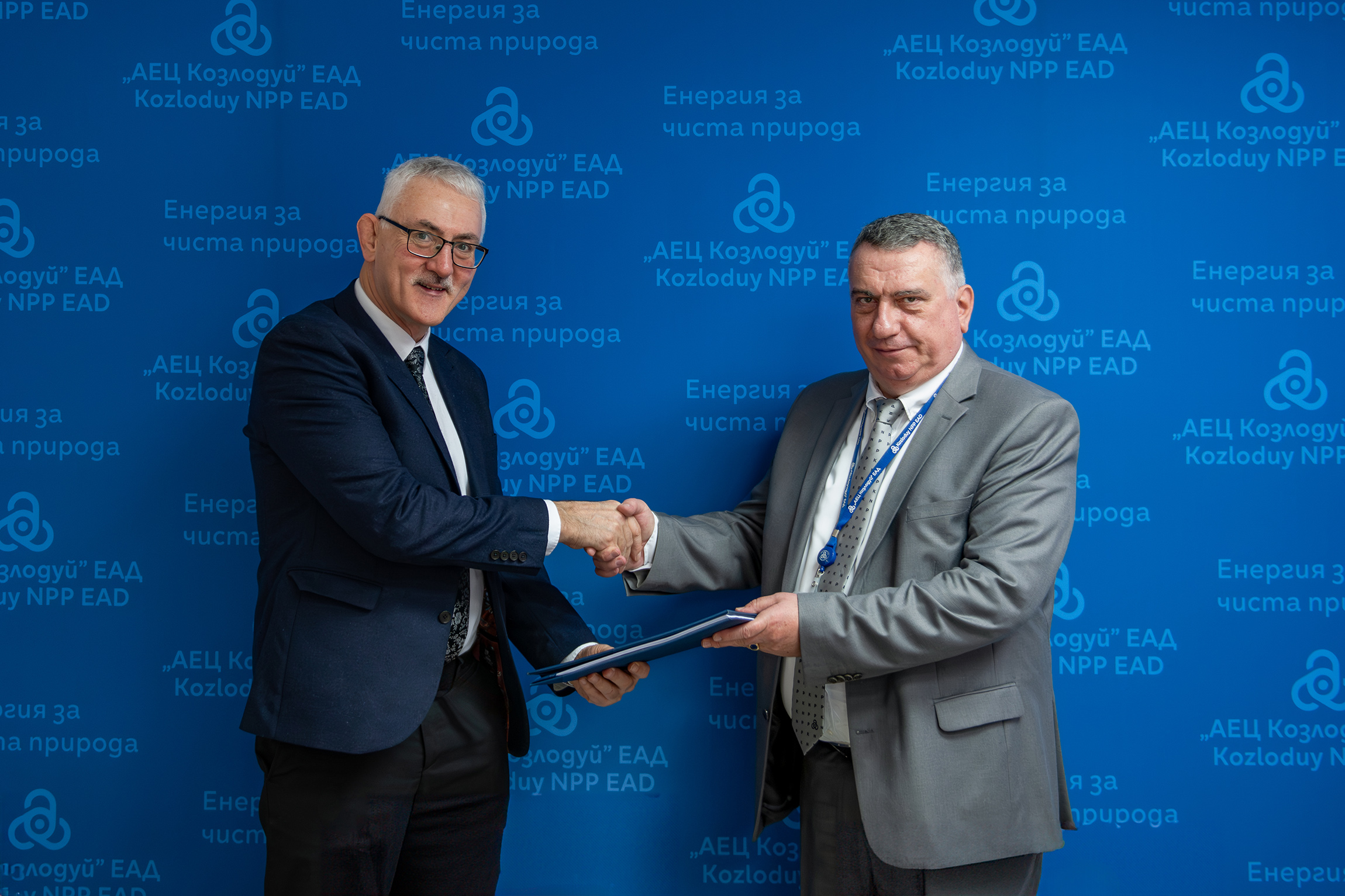IAEA MISSION CONDUCTED AT KOZLODUY NPP
06.12.2024
An OSART (Operational Safety Review Team) Mission of the International Atomic Energy Agency (IAEA) took place at the Kozloduy nuclear power plant from 18 November to 5 December 2024. In the framework of the mission, an independent review of the level of safety in the operation of the nuclear units was carried out based on IAEA standards.+
The Agency team comprised of 13 experts from 10 countries - Sweden, France, the United Kingdom, Spain, the Netherlands, Germany, the Czech Republic, the United States, Finland, and Canada. They reviewed 10 areas: Leadership and Management for Safety, Training and Qualification, Operations, Maintenance, Technical Support, Operating Experience Feedback, Radiation Protection, Chemistry, Emergency Planning and Response, and Accident Management. In each of these areas, the IAEA experts collaborated with counterparts from different departments of Kozloduy NPP.
During the mission, the reviewers made a number of walkdowns at various facilities and equipment on the site – workshops, laboratories, safety systems, the Main Control Rooms and Turbine Halls of Units 5 and 6, the Full-Scope Simulator for WWER-1000 reactors at the Training Centre, the on-site and off-site (in Kozloduy) Emergency Response Centres. The OSART team conducted multiple interviews with workers and employees and observed pre-job briefings, meetings, functional tests, performance of specific activities, theoretical and practical trainings, simulator trainings, etc.
At the exit meeting held on 5 December, which was attended by the IAEA experts, the Chair of the Nuclear Regulatory Agency Tsanko Batchiyski, the NPP management and counterparts in the review areas, the draft mission report was handed over to the plant. The document, whose final version will be submitted to the Bulgarian government within three months, includes the observations and conclusions of the IAEA team as well as recommendations and suggestions for improving the activities related to maintaining the high level of safety achieved.
In his speech, Ivan Andreev, the Kozloduy NPP CEO, stated that the goal of the Bulgarian partners was to clearly show that safety is a top priority for every employee at the power plant. He assured the reviewers that the conclusions summarised in the official OSART mission report will contribute to the further improvement of all aspects of Kozloduy NPP activity and to maintaining the safe and efficient operation of Units 5 and 6. Ivan Andreev thanked the participants in the preparation and conducting of the review and underlined that the good results are the consequence of the joint efforts of the Company's team involving people of proven expertise and professional dedication.
Tsanko Bachiyski, Chair of the Bulgarian Nuclear Regulatory Agency (BNRA), congratulated the teams participating in the review for the job well done during the mission. In his address, he highlighted the significance of leadership in securing safety and stated that Kozloduy NPP can rely on the BNRA support in the plant's pursuit of new achievements.
The IAEA team leader, John Duguid, summarised the work of the mission noting the extremely good preparation of the plant and the full cooperation provided to the reviewers. He pointed out that a number of commendable features of Kozloduy NPP were identified: excellent material condition, impressive housekeeping, and strong bias for action.
The OSART programme, established by the IAEA in 1982, takes into account various aspects of nuclear facility safety, including maintaining leadership and management with a focus on safety as a top priority, ensuring that activities are performed by competent and motivated personnel, maintaining a high level of emergency preparedness, providing the necessary resources to ensure the reliable, stable and efficient operation of nuclear power units, and continuously enhancing safety culture.
The team's findings, based on the IAEA safety standards, outline the areas with a room for improvements in activities by applying international operating experience. At the same time, attention is drawn to examples from the work of the reviewed nuclear power plant which may be useful for other companies in the nuclear industry; these examples are accordingly published in the database of good practices established during OSART missions.

